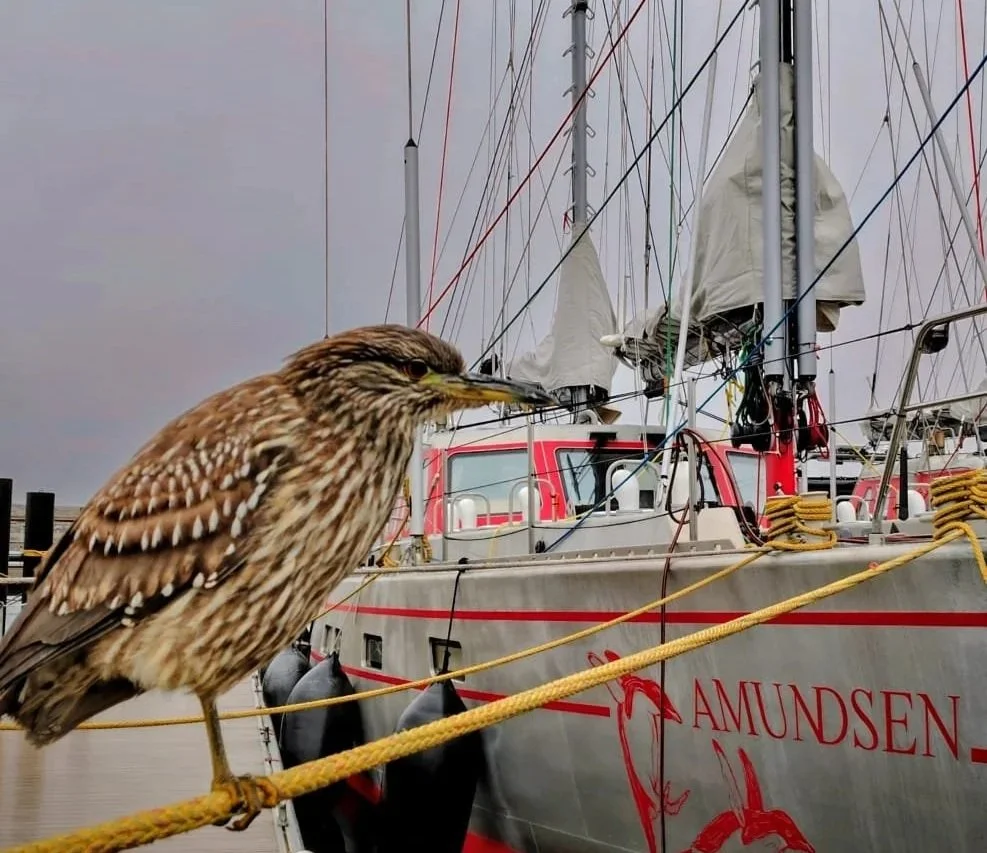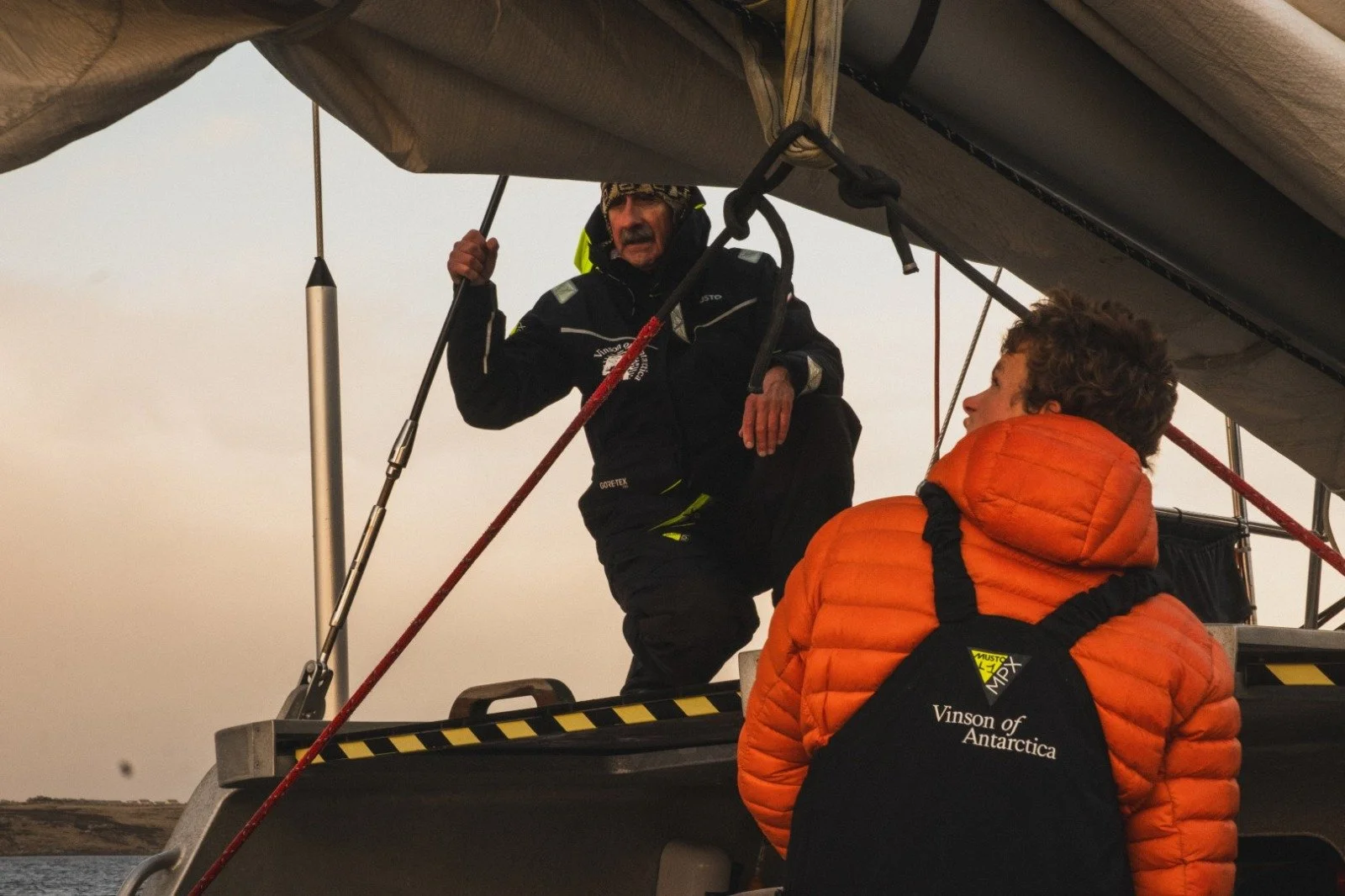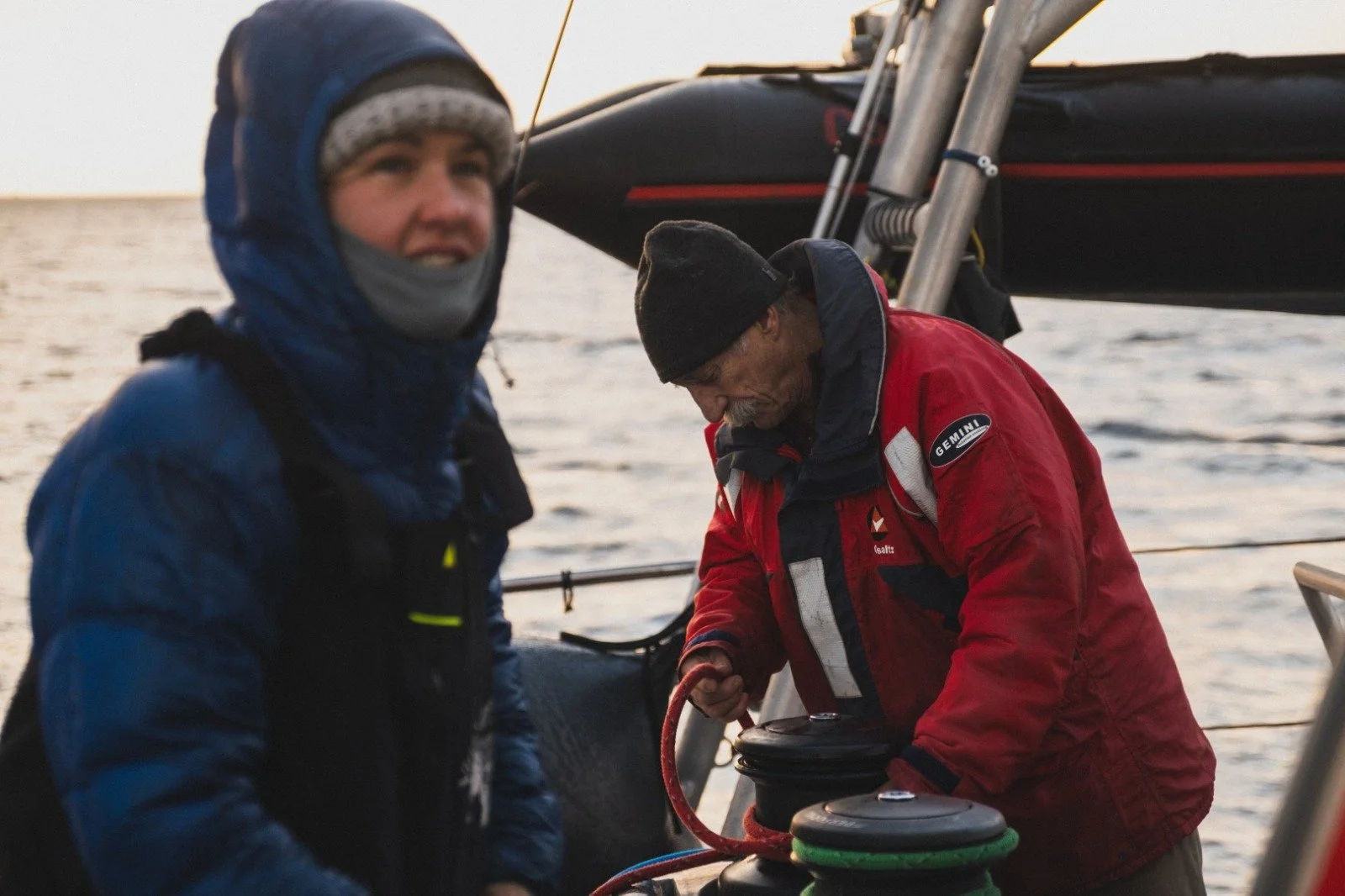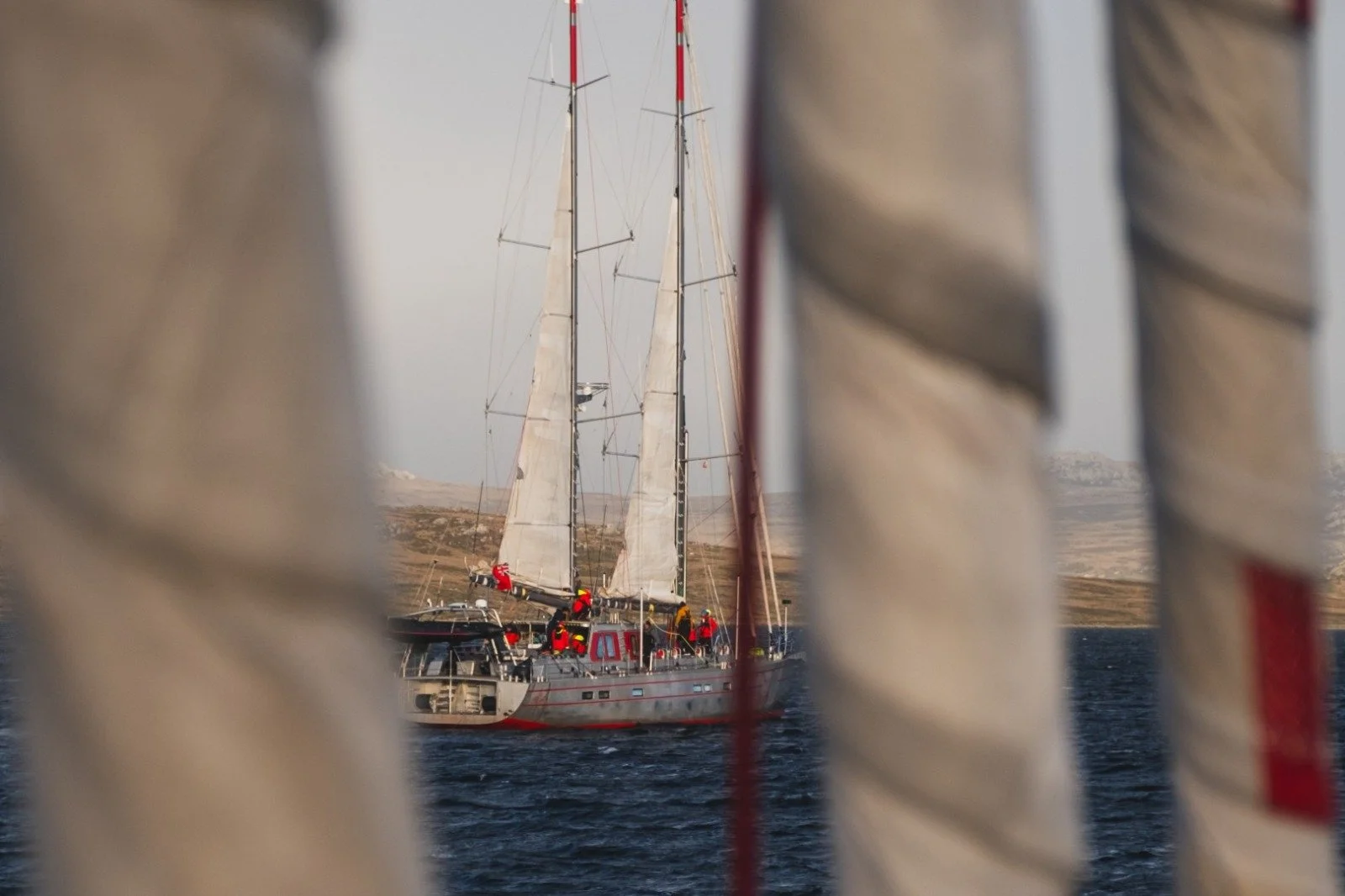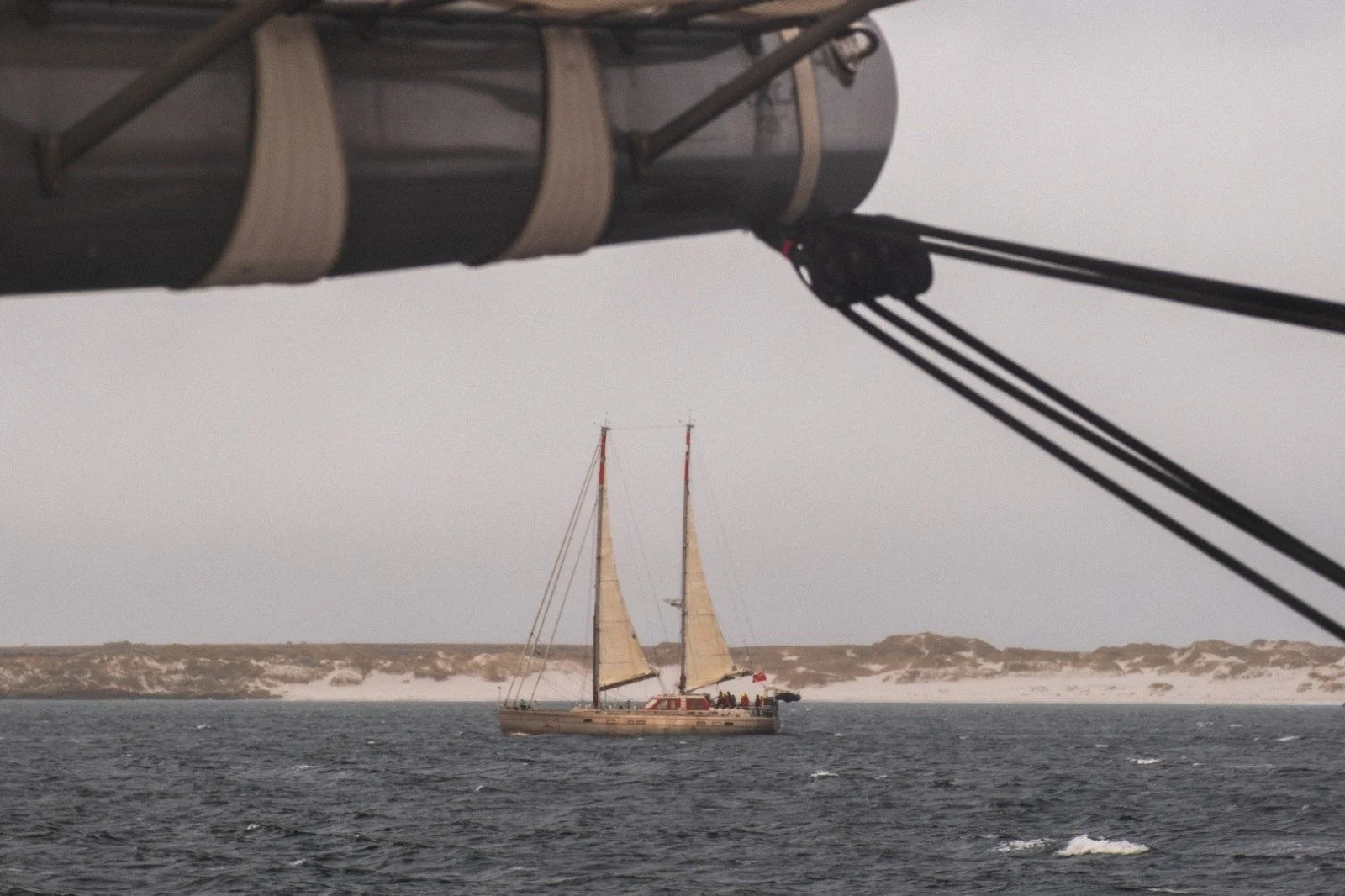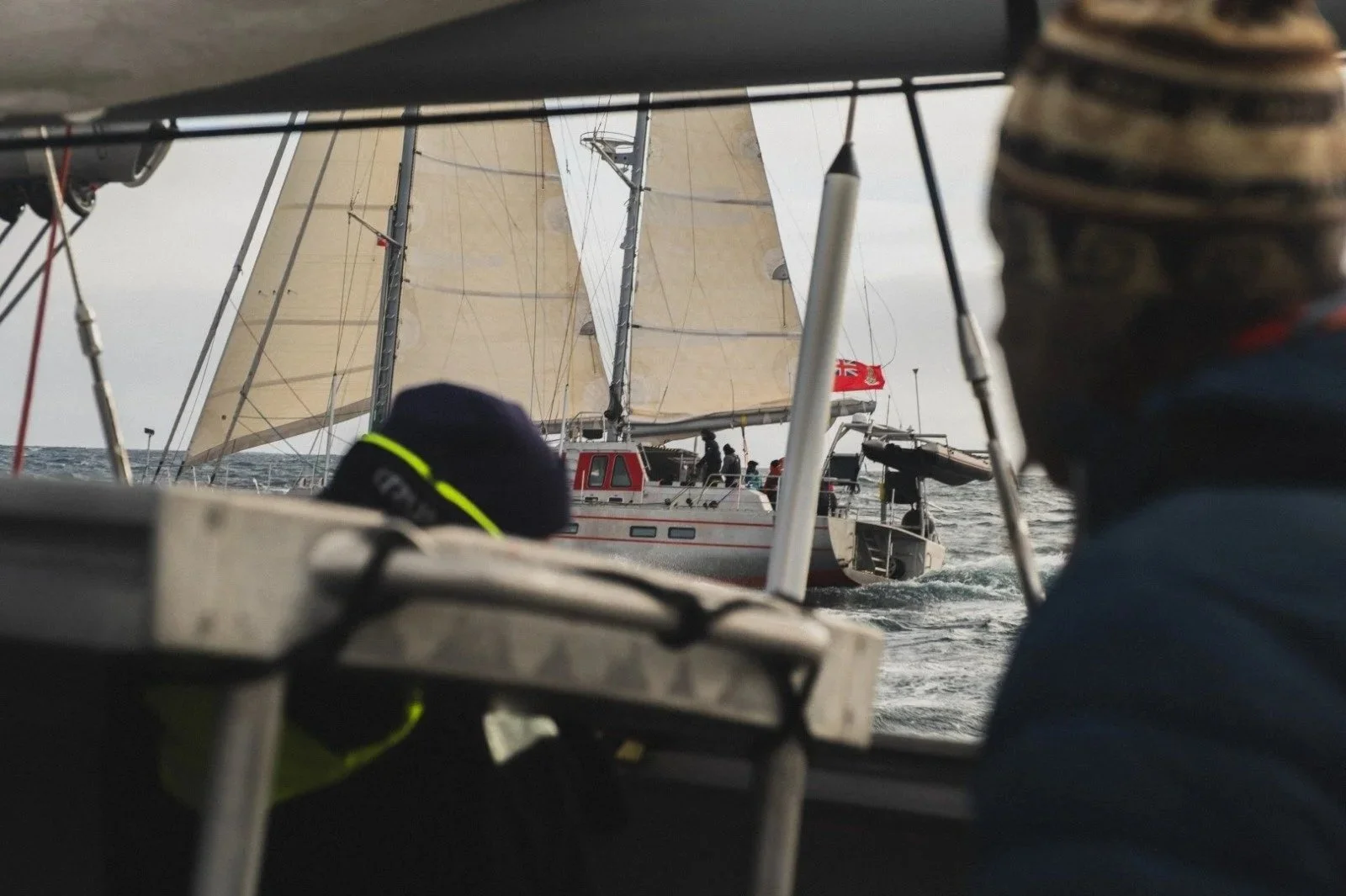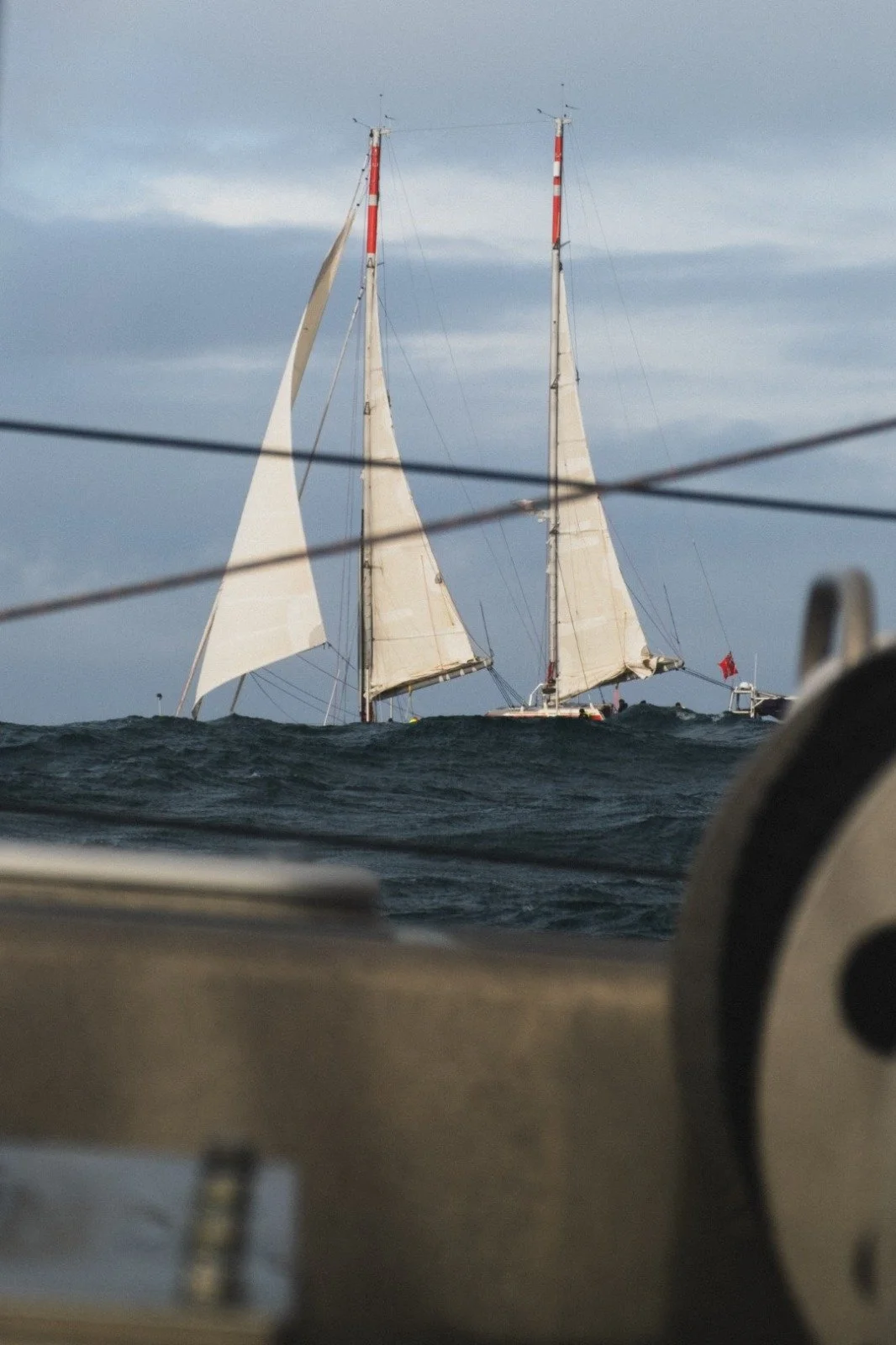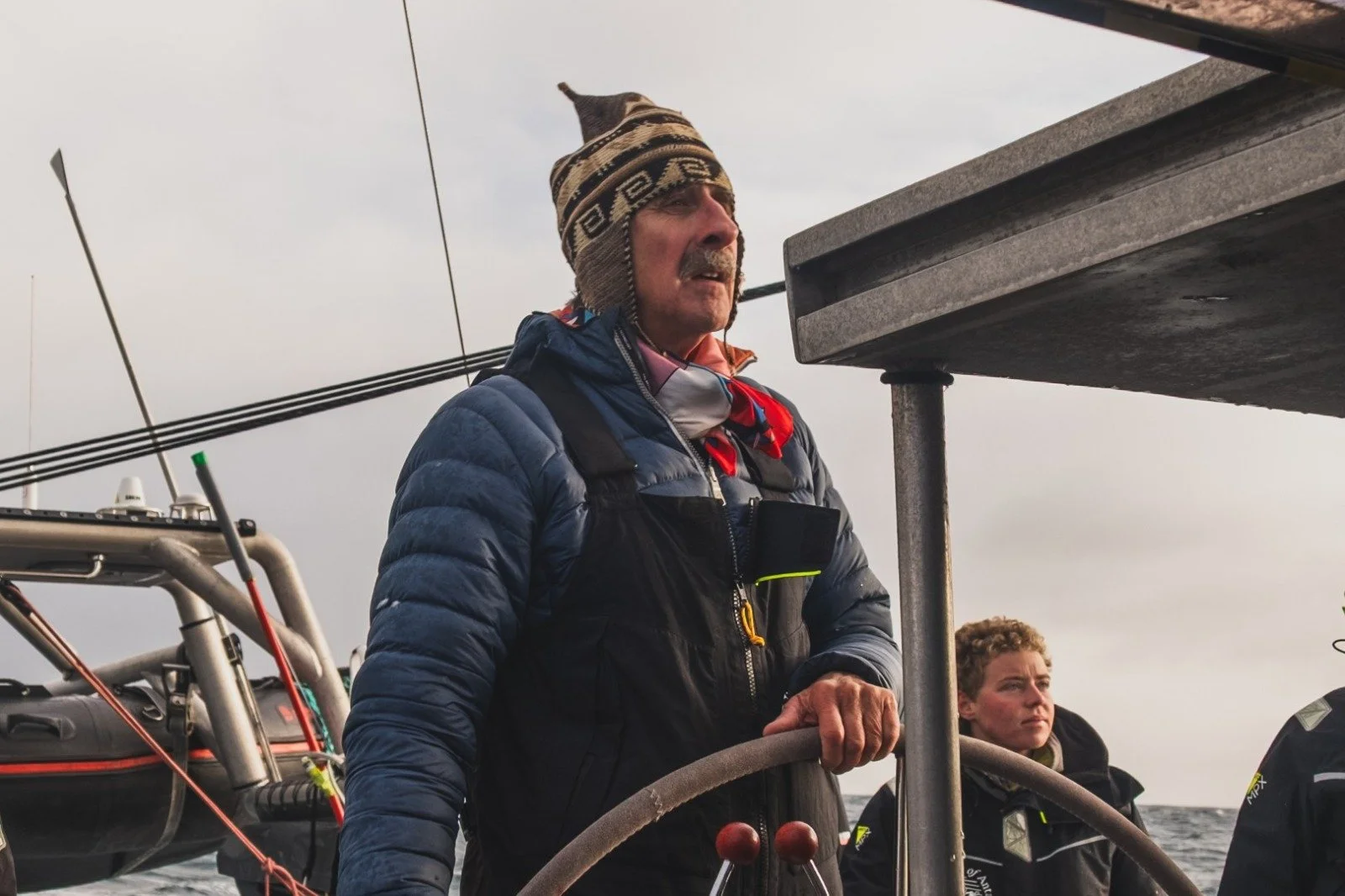Back South
A juvenile Black-crowned Night Heron resting on the mooring line of the Amundsen, Stanley.
Monday night has caught us together. Amundsen and Vinson of Antarctica departed Port Stanley (Falkland Islands) this morning on a trip to take the ski-mountaineers to the snow line. With Skip Novak in command, the two vessels have lifted anchor and hoisted their sails next to each other, and now, after a whole day, Amundsen’s navigation lights are bright and only a few yards away from us. We are so close that Tor, Vinson’s skipper, is frequently checking if either of us should steer away from the other.
Skip and Tor.
Melissa and Jérôme Poncet.
It feels good to be at sea with an expedition’s purpose. Winterising is necessary. We take the boats to Cape Town, and with an almost obsessive preventive mind, we get our credit to use the boats in these demanding waters, with the least possible amount of technical issues in the following eight months. But it’s easy, in the shipyard and delivering the boat without guests, to forget the final purpose, why we care so much for the boats, why we have sailed such a long passage in the last month to be back to the Southern Sea, and why we squeeze our brains so severely during the yearly refit. But tonight, a quiet boat with most of the guests sleeping after their first dinner at sea, reminds us we are back to the ultimate purpose of the boats. We are on an expedition, and we are taking people to discover such a remote and unique world.
This time, the adventurers are ski-mountaineers. We are sailing them towards the remote British island of South Georgia, which by this time of the year should be well covered in snow up to the beach line. The end of winter is the best time to visit the island for skiing. It gives us more light hours than a couple of months ago, milder temperatures, but still a good snow pack from where we land on shore, to start the ski adventures right from the boat.
It's pitch dark and sepulchral silent in the pilot house. For a few seconds, sometimes we can only guess we are in a watch of five. The instrument screens, as well as this computer screen, are dimmed to the minimum amount of light.
No one and nothing else is on the radar screen, but us, although it may be slightly different in the next couple of days. The world’s largest iceberg, named A23a, has recently run aground in shallow water off the island. This colossal body of ice, which broke apart from Antarctica forty years ago and is about two times the size of Greater London, appears to be stuck and should start breaking up on the island’s south-west shores, exactly where we are heading.
A23a, the world’s largest iceberg, floating close to South Georgia Island, right, in the Southern Ocean. Bottom right is A23c, a 50 square mile piece that has broken off A23a and drifted south. NASA
Pictures from Kenneth Perdigón, Mariana Esperón and Jacob Bonnick.
Kenneth Perdigón


